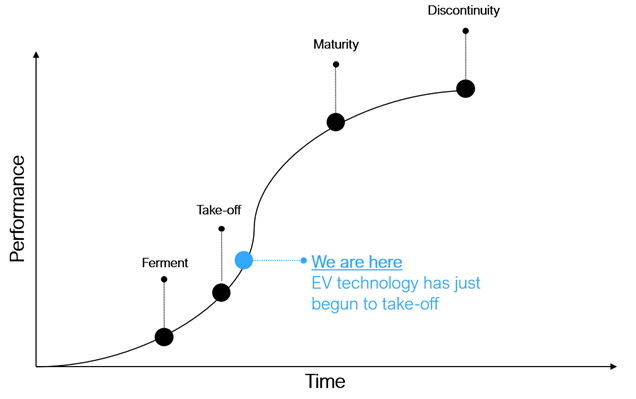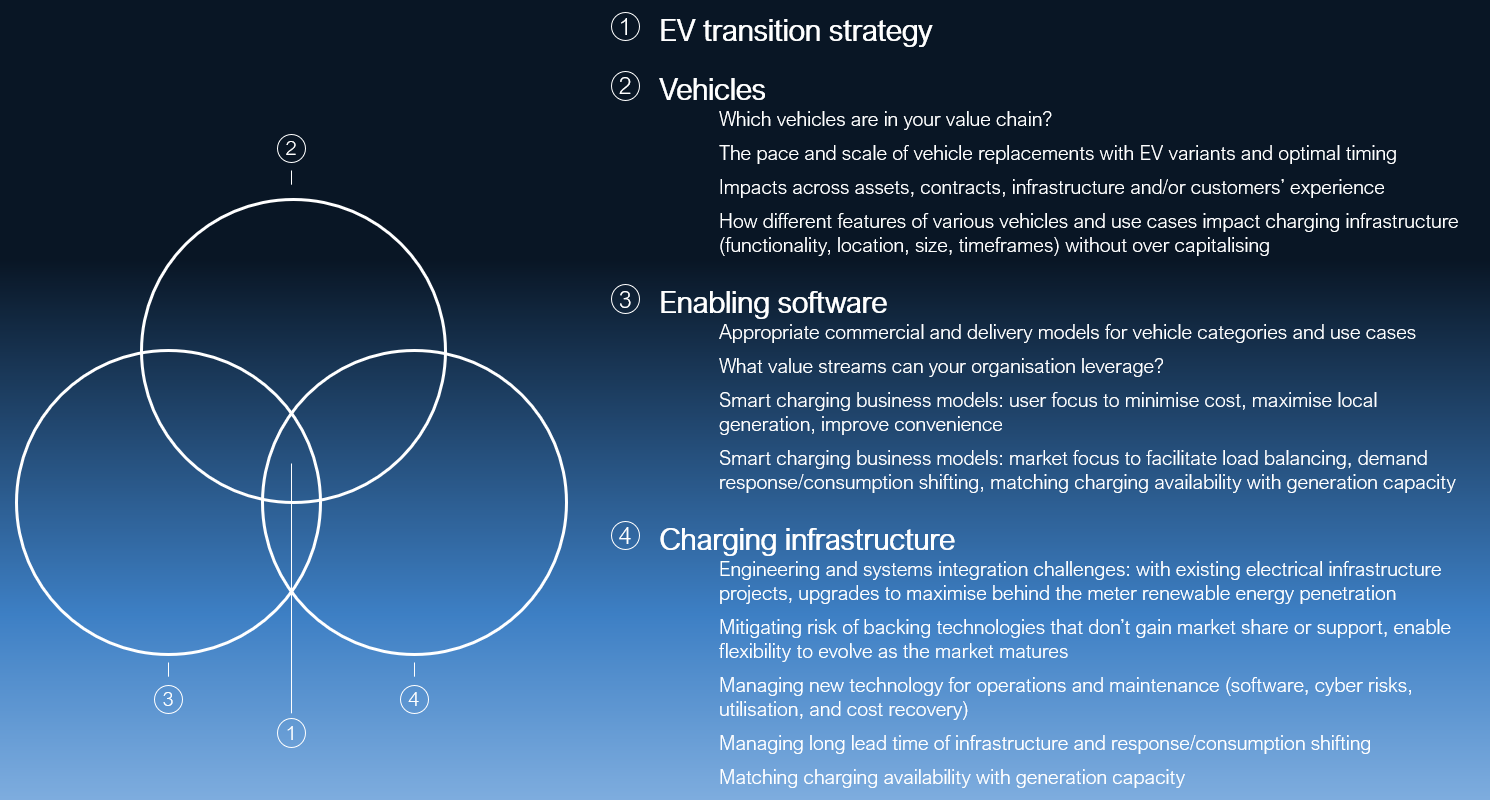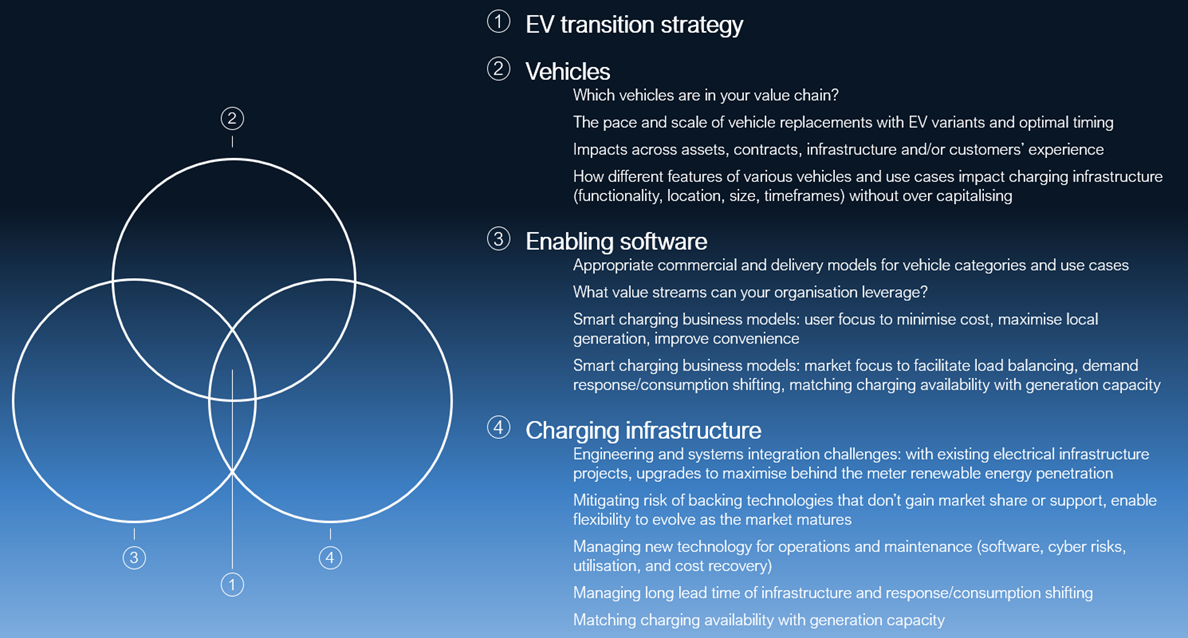Transport emissions are around 19% of Australia’s total emissions footprint and of that, passenger vehicles are responsible for more than 50% of emissions. Decarbonising transport is therefore a critical lever for the achievement of both 2030 and 2050 net zero ambitions. In the short to medium term, electric vehicles (EVs) are the most advanced, scalable technology for decarbonising transport.
To date, however, the EV market in Australia has been sluggish relative to the rest of the world where electric vehicle uptake is increasing dramatically, with sales increasing by 50% between 2021 and 2022 and making up 14% of total global new car sales[1]. As the market share and demand for EVs rises, technology development and improvements are expected to increase exponentially providing avenues for additional use cases, mainstreaming of applications and further policy development. With close to 4% market share in Australia, it’s expected that electric vehicles will enter their growth and take-off phase along the technology maturity curve[2].
This article considers the role EVs can play within a company’s net zero framework.
'National Electric Vehicle Strategy' has been released. What does it tell us?

Figure 1: Technology maturity curve
To spur the local market in Australia, the recently released National Electric Vehicle Strategy prioritises the development of a vehicle efficiency standard. This will significantly increase the appeal of the Australian market to international vehicle OEMs and reduce one of the current major barriers to EV deployment.
While the measures outlined in the National EV Strategy will improve the availability, cost and accessibility of EVs, the landscape of this nascent market is still dynamic such that:
-
Technology research and development to improve range, features and capabilities of vehicles is ongoing.
-
Charging infrastructure availability and types is continuing to develop and mature.
-
Market dynamics for both vehicles and Australia’s energy markets are shifting to meet increased demand and changes in technology.
-
Policy and regulations are evolving to cater for new risks and a changing transport sector.
While slower than the US, Europe and China, Australia's EV transition is well underway and will only accelerate in the face of pressure from stakeholders and governments to reduce emissions. As we have seen with other rapid, large scale technology transitions such as the switch from coal to cleaner energy sources, there can be far reaching impacts for end users and businesses in terms of costs, risks and opportunities. Organisations will need to evaluate where EVs sit within their value chain. This includes your own fleet, employee vehicles, contractors, supply chain and customers.
Are we addressing the risks?
In some sectors, the EV ecosystem (vehicles, chargers and enabling software) can be leveraged for new and adjacent revenue streams and offer opportunities to develop new business models. However, there are also many risks to manage, with the most critical risk to a timely and orderly transition being that infrastructure deployment lags vehicle availability, throttling the growth phase. We are seeing this play out in other markets globally and Australia is likely to see similar challenges with long lead times on charging infrastructure implementation.
The advent of new technology also brings several other risks that will need to be evaluated and managed. They include:
-
Determining which technologies, suppliers and ecosystems to work with so that future opportunities are not curtailed, and investment is deployed efficiently.
-
The impact of mass EV adoption on the electricity network and how this will change the resilience of local networks as well as the models for procuring and managing electricity contracts.
-
A lack of familiarity or niche skill sets that can impact the availability of operation and maintenance support for vehicles, infrastructure and software causing delays or increasing costs for operations (the National EV Strategy includes training and funding strategies to address this knowledge gap within Australia).
-
Cyber security exposure has increased with requirements of chargers and vehicles needing connectivity to internet based services to take full advantage of charging management services that improve the safety and availability of charging.
-
Fire risk is different for combustion vs. battery based vehicles which means emergency services or fire protection strategies will need to address both technology types during the transition period. Additionally, improvements to fire protection strategies for battery vehicles are required as technology shifts and changes.
Putting your organisation in the driver’s seat
Many organisations know that the electrification of passenger and other vehicles is a trend that is fast locking in, however there is a distinct gap in understanding and appreciating the impact on operations and the behavioural and procurement changes required for a successful transition.
Through our decarbonisation strategy work, Energetics has seen that an EV transition will often form an integral part of a net zero strategy, implemented alongside increasing renewable energy use behind and in front of the meter. Now is the time to start turning this strategic abatement option into an operational plan. A detailed transition plan is required to identify the gates and decision points so your organisation can effectively and efficiently take action on and advantage of, the changes and opportunities. A transition plan should cover all three elements of the electric vehicle ecosystem.
Figure 2: EV ecosystem and keys to a transition plan






